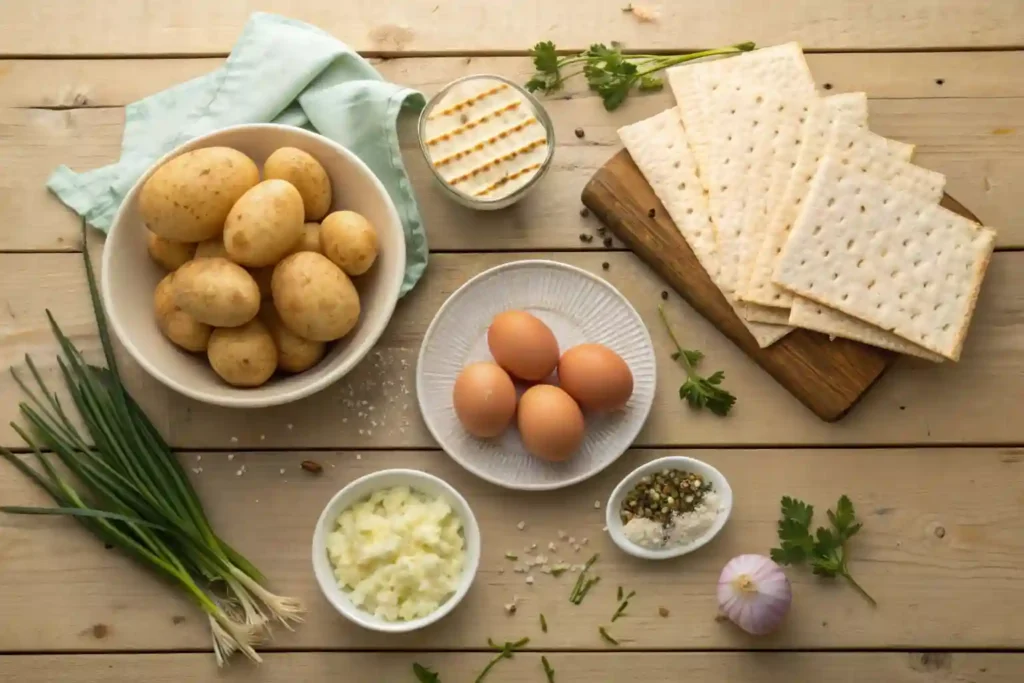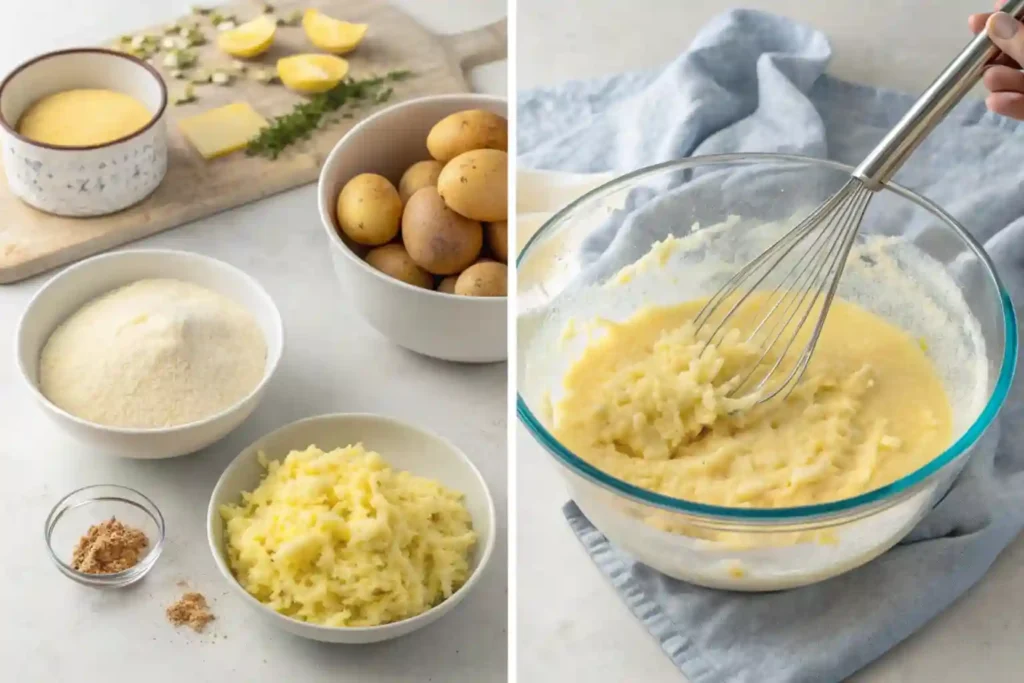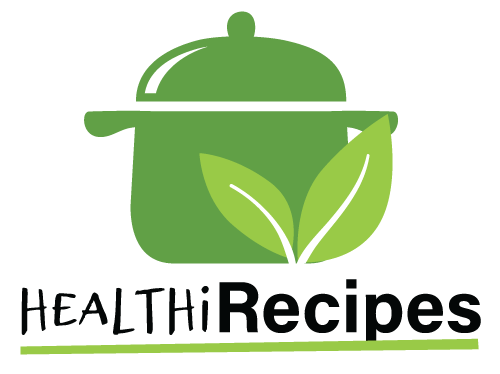Table of Contents
1. Introduction to Passover Potato Pie
Passover is a significant Jewish holiday that commemorates the Exodus of the Israelites from slavery in Egypt. During this time, families gather to celebrate with traditional foods that adhere to the dietary laws of kashrut. One beloved dish that often graces the Seder table is the Passover potato pie. This comforting dish not only satisfies the palate but also holds a special place in Jewish culinary tradition.
The Passover potato pie is a versatile dish that can be enjoyed as a main course or a side dish. Its rich flavors and hearty texture make it a favorite among families celebrating the holiday. In this guide, we will explore how to make the perfect Passover potato pie, ensuring that it becomes a staple in your Passover celebrations.
2. Ingredients for the Perfect Passover Potato Pie

To create a delicious Passover potato pie, you will need a selection of fresh ingredients. Here’s a breakdown of what you’ll need:
- Essential Ingredients:
- Potatoes: The star of the dish. Choose starchy varieties like Russet or Yukon Gold for the best texture.
- Matzo meal: This acts as a binder and gives the pie its unique flavor.
- Eggs: Essential for binding the ingredients together.
- Onions: For added flavor, sautéed onions can enhance the overall taste of the pie.
- Salt and pepper: Basic seasonings to taste.
- Optional Ingredients:
- Garlic: For an extra layer of flavor.
- Herbs: Fresh herbs like parsley or dill can add a refreshing touch.
- Cheese: If not strictly adhering to kosher laws, adding cheese can create a richer flavor profile.
- Tips for Selecting Potatoes:
- Look for firm, unblemished potatoes.
- Avoid potatoes with green spots or sprouts, as these can be toxic.
- For a creamier texture, consider using a mix of starchy and waxy potatoes.
3. Step-by-Step Instructions to Make Passover Potato Pie

Creating the perfect Passover potato pie involves a few simple steps. Follow this guide to ensure your dish turns out delicious every time.
Step 1: Preparing the Potatoes
- Peeling and Grating:
- Start by peeling the potatoes. This removes the skin, which can be tough and bitter.
- Grate the potatoes using a box grater or a food processor. This will create a fine texture that helps the pie hold together.
- Reducing Moisture:
- After grating, place the potatoes in a clean kitchen towel and squeeze out excess moisture. This step is crucial for achieving a crispy crust.
- You can also let the grated potatoes sit in a colander for about 15 minutes to drain further.
2: Mixing the Ingredients
- Combining the Ingredients:
- In a large mixing bowl, combine the grated potatoes, matzo meal, and eggs. Mix well until all ingredients are evenly distributed.
- Add in the sautéed onions, salt, and pepper. If using garlic or herbs, now is the time to incorporate them.
- Adjusting Consistency:
- The mixture should be thick but not dry. If it seems too dry, you can add a little water or an extra egg to achieve the desired consistency.
3: Baking the Pie
- Preheating the Oven:
- Preheat your oven to 375°F (190°C). This ensures that the pie cooks evenly.
- Preparing the Baking Dish:
- Grease a 9-inch pie dish or a similar-sized baking dish with oil or cooking spray. This will prevent the pie from sticking.
- Pour the potato mixture into the prepared dish, spreading it evenly.
- Baking Time:
- Bake the pie for about 45-60 minutes, or until the top is golden brown and crispy. You can check for doneness by inserting a knife into the center; it should come out clean.
4. Variations of Passover Potato Pie
While the classic Passover potato pie is delicious on its own, you can experiment with various variations to suit your taste:
Variation 1: Vegan Passover Potato Pie
- Substitutes for Eggs:
- Use flaxseed meal mixed with water as a binding agent. Combine 1 tablespoon of flaxseed meal with 2.5 tablespoons of water and let it sit until it thickens.
2: Loaded Potato Pie
- Adding Vegetables or Meats:
- Incorporate sautéed mushrooms, spinach, or even cooked ground meat for a heartier dish.
3: Gluten-Free Options
- Using Gluten-Free Matzo Meal:
- Substitute regular matzo meal with gluten-free options to cater to those with dietary restrictions.
5. Tips for a Successful Passover Potato Pie
To ensure your Passover potato pie turns out perfectly, consider the following tips:
Common Mistakes to Avoid
- Excess Moisture:
- One of the most common pitfalls when making Passover potato pie is not removing enough moisture from the grated potatoes. Excess moisture can lead to a soggy pie that lacks the desired texture. Always squeeze out as much liquid as possible before mixing the ingredients.
- Overmixing:
- While it’s important to combine the ingredients well, overmixing can lead to a dense pie. Mix just until everything is incorporated, and avoid vigorous stirring.
- Incorrect Baking Time:
- Baking times can vary based on your oven and the thickness of the pie. Keep an eye on the pie as it bakes, and use a toothpick or knife to check for doneness. If it comes out clean, your pie is ready!
Achieving the Perfect Texture
- Crispy Exterior:
- For a beautifully crispy top, consider broiling the pie for the last 5-10 minutes of baking. This will give it a golden-brown finish. Just be sure to watch it closely to prevent burning.
- Resting Time:
- After removing the pie from the oven, let it rest for about 10 minutes before slicing. This allows the pie to set, making it easier to cut and serve.
Serving Suggestions
- Garnishing:
- Serve the pie warm, garnished with fresh herbs like parsley or dill for a pop of color and flavor. A dollop of sour cream or a drizzle of olive oil can also enhance the dish.
- Pairing with Other Dishes:
- The Passover potato pie pairs wonderfully with other traditional Passover dishes. Consider serving it alongside:
- Brisket: A classic main dish for Passover.
- Tzimmes: A sweet stew made with carrots and dried fruits.
- Charoset: A sweet mixture of fruits and nuts that symbolizes the mortar used by the Israelites in Egypt.
6. Storing and Reheating Passover Potato Pie
To enjoy your Passover potato pie beyond the holiday, proper storage and reheating are essential.
Storing Leftovers
- Refrigeration:
- Allow the pie to cool completely before storing. Cover it tightly with plastic wrap or aluminum foil and place it in the refrigerator. It can be stored for up to 3-4 days.
- Freezing:
- If you want to keep it longer, consider freezing the pie. Wrap it tightly in plastic wrap and then in aluminum foil to prevent freezer burn. It can be frozen for up to 2 months. When ready to eat, thaw it in the refrigerator overnight before reheating.
Reheating Instructions
- Oven Method:
- Preheat your oven to 350°F (175°C). Place the pie in an oven-safe dish and cover it with aluminum foil to prevent it from drying out. Heat for about 20-30 minutes, or until warmed through.
- Microwave Method:
- If you’re short on time, you can reheat individual slices in the microwave. Place a slice on a microwave-safe plate and cover it with a damp paper towel. Heat for 1-2 minutes, checking for doneness.
7. Conclusion
The Passover potato pie is not just a dish; it’s a celebration of tradition, family, and the rich flavors of Jewish cuisine. By following this guide, you can create a delicious pie that will impress your guests and become a cherished part of your Passover celebrations. Whether you stick to the classic recipe or explore the various variations, this dish is sure to bring joy to your holiday table.
In the next part, we will address some frequently asked questions about Passover potato pie, including dietary considerations and tips for making the most of this delightful dish.
For those looking to expand their culinary repertoire, you might also enjoy exploring our guide on Potato Kugel: Passover Guide for another delicious potato dish that’s perfect for the holiday. Additionally, if you’re interested in more creative recipes, check out our article on Healthy Choice Frozen Meals for convenient meal options. Lastly, don’t miss our Dubai Chocolate Bar Recipe for a sweet treat to complement your Passover feast.
8. Frequently Asked Questions (FAQs)
As you prepare to make your Passover potato pie, you may have some questions regarding ingredients, dietary restrictions, and traditional practices. Here are some common FAQs to help guide you:
Can Jews Eat Potatoes During Passover?
Yes, Jews can eat potatoes during Passover. Potatoes are considered kitniyot by some Jewish communities, which means they are legumes and grains that are traditionally avoided by Ashkenazi Jews during Passover. However, many Sephardic Jews do consume kitniyot, including potatoes. Always check with your community’s customs if you’re unsure.
What Is Potato Kugel Made Of?
Potato kugel is a traditional Jewish dish made primarily from grated potatoes, eggs, and onions. The ingredients are mixed together and baked until golden brown. Some variations may include:
- Matzo meal: Used as a binder.
- Spices: Such as salt, pepper, and garlic for added flavor.
- Vegetables: Like carrots or zucchini for a twist.
Can You Eat Kugel on Passover?
Yes, you can eat kugel on Passover, provided it is made with kosher for Passover ingredients. Many families enjoy potato kugel as part of their Seder meal. Just ensure that any matzo meal or other ingredients used are certified for Passover.
Is Potato Starch OK for Passover?
Yes, potato starch is generally considered acceptable for Passover. It is often used as a thickening agent in various dishes and can be a great alternative to flour in recipes. Just make sure to check that the potato starch is labeled as kosher for Passover.
What Baked Goods Are Forbidden During Passover?
During Passover, certain baked goods are forbidden due to the prohibition against leavened bread. This includes:
- Bread: Any bread made with wheat flour that has risen.
- Pastries: Items made with yeast or leavening agents.
- Certain cakes: Cakes that contain flour unless they are specifically made for Passover.
What Can I Substitute for Flour on Passover?
If you need a substitute for flour during Passover, consider the following options:
- Matzo meal: A common substitute that works well in many recipes.
- Potato starch: Great for thickening and can be used in baking.
- Almond flour: A gluten-free option that can be used in various recipes.
- Coconut flour: Another gluten-free alternative, but use it sparingly as it absorbs moisture differently.
